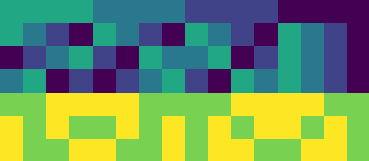A cheese making experiment
One of my earliest novel designs was drafted for a cheese making company. First, raw milk is stored in huge milk tanks. Next, the milk is transported to curds production tanks where batches of curds are made. Many batches can be made from a single batch of raw milk. Finally, the curds are processed into cheese. Many sets of cheeses can be made from a single batch of curds.
a schematic of the cheese making process and the experimental factors
There were two two-level factors acting on batches of milk, five two-level factors acting on batches of curds, and one four-level plus two two-level factors acting on sets of cheeses. For the design construction, I replaced the four-level factors with two two-level factors.
The experimental restrictions were such that we were allowed to use eight batches of milk, four batches of curds per batch of milk and four sets of cheeses per batch of curds. So the experiment was to include 8 x 4 x 4 = 128 sets of cheeses in total.
There is a design for 11 factors and 128 runs that has orthogonal main effects and interactions. However, this design cannot be split into 32 curds productions of four sets of cheeses. The reason is that the sub-design at the milk and the curds levels involves 32 batches of curds and seven two-level factors. It is not possible to have a 32-run design in seven two-level factors with orthogonal main effects and interactions.
Back in 1992, no clear procedures were available to make a good design. Eventually, I did find a way out. My contribution was to find a way to link a 32-run design with seven factors with a 128 run design in four factors blocked in 32 blocks of size four. See Schoen (1999) for details.

